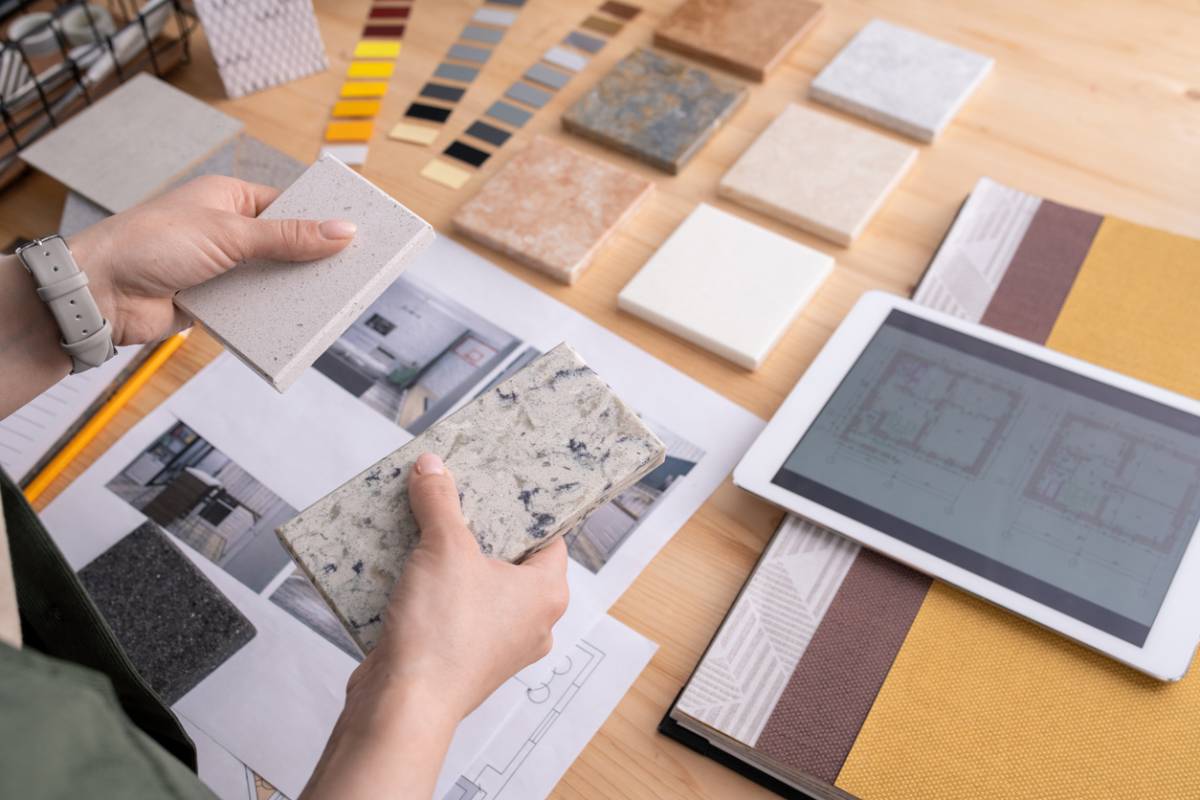Remodeling your home is always an exciting project that gives you an opportunity not only to breathe new life into your living space but also allows you to express your unique personality. Below, we cover key tips for choosing materials for interior remodeling.
Tips for Choosing Materials for Interior Remodeling
Whatever room you’re remodeling, be it the kitchen, the living room or the bathroom, choosing the appropriate materials for functionality, longevity and your desired aesthetics is crucial, and with all the wide array of materials and styles available in the market, it’s easy to be confused and overwhelmed.
To help reduce your confusion and overwhelm, here are some tips to help you.
Define your style and requirements
It’s easy to get ahead of ourselves when we are excited. But before you start selecting materials, it’s better to define your style and requirements first. Take your time to determine your preferred style and the particular requirements of your space. Are you aiming for a modern minimalistic look, French country style, shabby chic, or a Scandinavian interior? What kind of materials do you need, especially in high-traffic areas? How do you want to feel when you are in that room? Do you want a sense of calm? Vibrancy? Remember that the color, texture, and the kind of materials you use can influence the mood and emotions of the occupants of a space.
Budget
Remember that stone, metals, and woodwork can cost a lot more than others. If you are working on a limited budget, consider using small details and accents here and there. This can help you save money yet still give you the look and feel you’re aiming for.
Research material options
Once you have decided on a style, it’s time to research the different materials available for your project. You are free to explore the various available materials from floors to cabinets and countertops. There are so many materials you can consider like marble, porcelain, quartz, hardwood, laminate, tile and many others. Evaluate their suitability for what you’re planning and check if they are within your budget.
Consider durability and maintenance
Durability and ease of maintenance are very important considerations when you’re selecting materials for interior design. Choose materials that can withstand daily wear and tear while maintaining their aesthetic beauty. For example, when remodeling your kitchen, choose water resistant materials flooring options that can take daily splashes and spills without a problem.
Consider long-term value
It’s easy to be tempted to choose the more affordable materials, but it’s important not to give in to that temptation. Instead, consider the long-term value of each material and invest in high-quality, durable materials with a timeless and classic appeal. These materials can potentially save you money in the long run. Besides, selecting sustainable materials that can enhance the overall value of your home can most likely be of benefit to you if you someday decide to put your home on the market in the future.
Seek inspiration and advice
Collect inspiration from websites and magazines. Social media can be a good source of inspiration for the latest trends and innovative material combinations. Most importantly, talk to design and build firms. They are professionals who can give you the best insights and advice because of their knowledge, expertise, and experience. They can help you make informed choices and empower you to bring your vision to life.
Match colors and materials
Make sure that the materials and colors complement each other. There is no definitive rule whether it’s best to choose color or material first.
In the end, this decision will rely on which one is non-negotiable. If it’s color, then choose color first. If it’s material, then decide on a material first.
Know your materials
Your knowledge about which materials to use is important. Some materials are functional, some are purely decorative. This is a good point to remember when choosing the materials for your project.
Consider the natural lighting of your space. bNatural light can alter the way some materials look during the course of the day. Remember to consider this when deciding on things like paint colors, window treatments paint colors, and materials.
Opt for variety
Do not be afraid to have a combination of two or three different materials. Soft and hard materials can be combined together while incorporating different textures, color shades, or complementary colors. Just remember that too much variety can make any room look too busy and unpleasant.
Test samples
Before you make your purchase decision, try to get your hands on samples of the materials you’re planning on buying and test them in your space. Observe how they look under different lighting conditions and alongside your furniture, cabinetry, etc. Feel the texture of each material and look closely at the quality. This testing can give you better results and allow you to make the necessary adjustments before you finally install them in your home.
Selecting the materials for your remodeling project is not a walk in the park. You will need expert help from professionals in this arena. Interior remodeling contractors can help you with the conceptualization, implementation, and completion of your dream project. With their expert guidance and know-how, you can avoid costly mistakes and allow you to enjoy putting your project to life.






